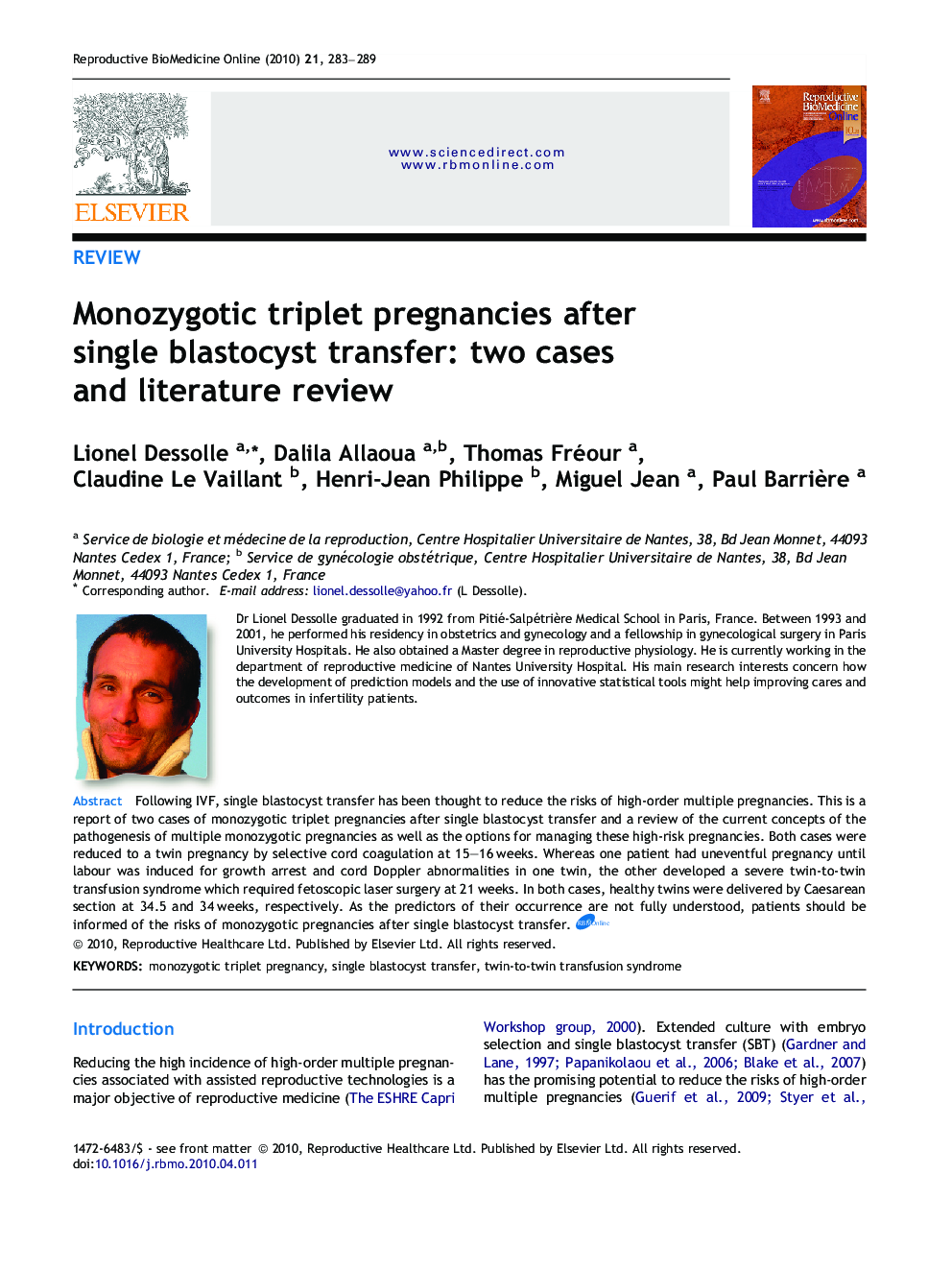| Article ID | Journal | Published Year | Pages | File Type |
|---|---|---|---|---|
| 3971506 | Reproductive BioMedicine Online | 2010 | 7 Pages |
Following IVF, single blastocyst transfer has been thought to reduce the risks of high-order multiple pregnancies. This is a report of two cases of monozygotic triplet pregnancies after single blastocyst transfer and a review of the current concepts of the pathogenesis of multiple monozygotic pregnancies as well as the options for managing these high-risk pregnancies. Both cases were reduced to a twin pregnancy by selective cord coagulation at 15–16 weeks. Whereas one patient had uneventful pregnancy until labour was induced for growth arrest and cord Doppler abnormalities in one twin, the other developed a severe twin-to-twin transfusion syndrome which required fetoscopic laser surgery at 21 weeks. In both cases, healthy twins were delivered by Caesarean section at 34.5 and 34 weeks, respectively. As the predictors of their occurrence are not fully understood, patients should be informed of the risks of monozygotic pregnancies after single blastocyst transfer.
